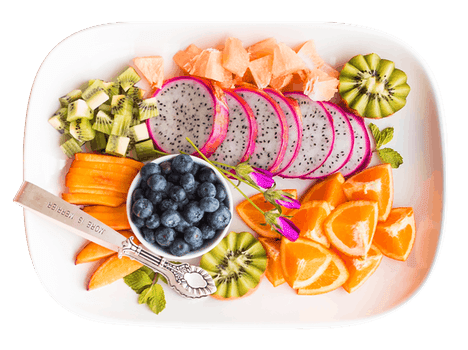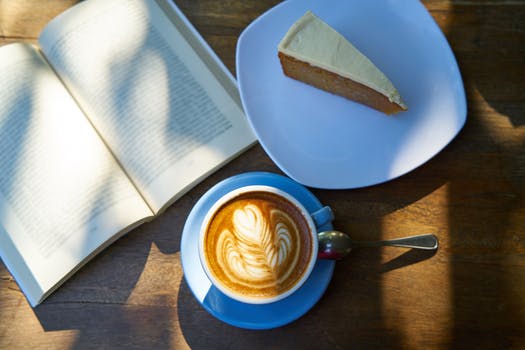Food for Thought: Secrets for Taking Better Food Photos While Traveling
At one time, photography was a way to document and record our experiences when we traveled. But over time, documenting vacations became more than just taking pictures of local cultures, beautiful scenery, and inspiring architecture.
These days, a vacation wouldn’t be complete without documenting the local food experiences and gastronomical fare.
Food photography is on the rise. Not only is it becoming one of the fastest growing hobbies for amateur photographers, but everyone is getting involved, from your parents to friends. Instagram and Facebook are laden with people sharing photos of food as part of their travel experience.
If you’re one of the many travelers who prefer to collect beautiful images instead of souvenirs, then this guide is for you. Below, we look at how you can do justice to your food photography while traveling.
1. Use natural light
When you’re traveling, you aren’t afforded photography studio lighting to capture great photos. Luckily, natural light is the best source of light to replicate the visual presentation of food. And depending on your destination, you may always find it readily available.
Even if your travel plans include less than preferable lighting conditions, a cloudy or rainy atmosphere can lead to some serious ambiance and mood to your photos.
Be sure to practice several ways of capturing natural light in your food photography before leaving. Try shooting from different angles and venturing out in your hometown and shooting in different locales such as restaurants, food halls, and food stalls.
If and when you can, try to plan your meals around the “golden hour” of photography, which is the hour before sunset when natural light provides beautiful soft lighting.
2. To flash or not to flash
When traveling, it’s best to be careful with the amount of gear you carry along. Taking too much gear can quickly become a burden and the potential for damages, theft, or loss can be detrimental to your travel plans. In this regard, try to travel without bringing along an external flash in your carry-on.
Flash may not be on everyone’s menu, and a quick strobe of bright light may put off other guests at your chosen restaurant. Not to mention, a direct flash will simply serve to flatten subjects, losing the purpose and appeal of enticing food photography.
Instead, practice shooting with different lighting situations, such as dimly lit restaurants. If you can, experiment with the features available on your camera like the:
• ISO
• Aperture
• Or shutter speed
Search for different sources of light as well.
A candle adds romantic ambiance to your photos, and clean, white plates or menus on white paper can double as an impromptu reflector.
3. Presentation is everything
Just like photographing food at a studio or your home, distractions around the principal subject, the food, can convolute the image and ruin the photo’s aesthetic appeal.
Experiment with different plates and in different settings. When possible, remove any distractions that may ruin the image. This includes randomly strewn cutlery, misaligned plates and grubby napkins.
When it comes to presenting food, remember KISS: Keep it sweet and simple.
4. Composition matters
Similarly to presentation, composition is still important no matter where your passport takes you. Achieving the perfect balance in photo composition takes practice. So, practice, practice, practice.
Most plates of food present their least desirable state when framed from directly above, unless, of course, this is an artistic direction, such as highlighting symmetrical presentation on a plate. As often as you can, experiment with different angles.
Food, like people, has specific angles that bring out the best features. Don’t be afraid to get down and low or shoot at an angle to perfectly compose your photo.
Some dishes may benefit from a tightly cropped photo, while others will present best zoomed out. Think multi-dish spreads like those found in Middle Eastern and Mediterranean cuisines.
5. Less is more
From a logistical and security standpoint, traveling light affords you more options to get the images and shots you want. When you’re exploring a new city and you’re decked out in camera gear, you draw attention to yourself and you can become susceptible to becoming a victim of crime.
As travel food photography requires you to “run and gun” or get multiple shots of your desired subject in as little time as possible (particularly in busy, bustling environments like food markets, crowded restaurants, and other foreign spaces where you don’t speak the language), the lighter you travel, the less likely things will become uncomfortable or in some situations, hostile.
As a foreigner in a new country, you’ll undoubtedly stand out, especially when you’re idling around capturing images of food. The last thing you want to do is burden yourself with excess and unnecessary camera gear.
Don’t forsake the experience
While it’s important to capture photos of your food to document your travel experience, it’s just as important to enjoy what’s presented in front of you. So take a few moments to put down your camera or smartphone, enjoy the travel experience, and allow yourself to capture the culinary scene before you through your senses.



